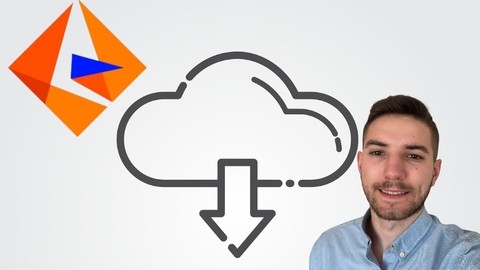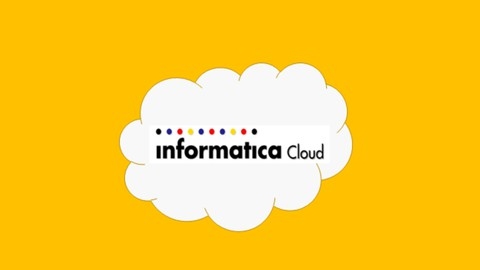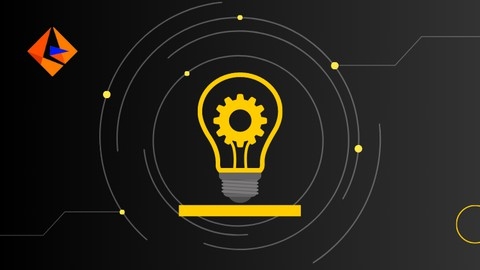Informatica Intelligent Cloud Services (IICS) is a powerful, cloud-based data integration platform that allows businesses to connect, integrate, and manage data from various sources.
Learning IICS can open doors to exciting career opportunities in data engineering, data integration, and cloud computing.
By mastering IICS, you can develop valuable skills in data warehousing, data transformation, and data governance, enabling you to contribute to efficient and reliable data pipelines.
Finding the right IICS course on Udemy can be a challenge, with so many options vying for your attention.
You’re likely seeking a comprehensive and engaging course that not only covers the theoretical foundations but also provides hands-on experience and real-world applications.
You need a course that can equip you with the practical skills necessary to excel in this rapidly evolving field.
We’ve carefully reviewed numerous IICS courses on Udemy, and our top recommendation for the best course overall is Informatica Cloud - Data Integration.
This course provides a solid foundation in IICS, covering essential topics such as cloud computing fundamentals, IICS architecture, and data integration techniques.
With its practical exercises and clear explanations, it’s an excellent choice for both beginners and those looking to deepen their IICS expertise.
While the Informatica Cloud - Data Integration course is our top pick, we understand that you might have specific learning preferences or requirements.
To help you find the perfect fit, we’ve compiled a list of other highly-rated IICS courses on Udemy.
So, keep reading to explore our detailed recommendations and embark on your IICS learning journey!
Informatica Cloud - Data Integration
This Informatica Cloud - Data Integration course teaches you the essentials of cloud-based data integration, starting with the fundamentals of cloud computing.
You will learn about IaaS, PaaS, and SaaS and understand how IICS (Informatica Intelligent Cloud Services) operates as an iPaaS solution, comparing it to traditional on-premise PowerCenter.
The course then delves into the various components of Informatica Cloud, its architecture, and how to utilize the Secure Agent for seamless connectivity.
You will gain hands-on experience setting up an Informatica Cloud account and exploring its diverse services, such as the Data Integration Service, Administration Service, and Monitor Service.
The course emphasizes practical skills by teaching you how to create folders, configure reusable connections for Flat Files and relational databases, and design mappings using the Mapping Designer.
You will also learn about crucial transformations like Aggregator, Sorter, Filter, Router, Sequence Generator, Union, Lookup, Unconnected Lookup, and Normalizer, understanding their properties and how to use them effectively.
Through a real-world business use case, you will apply your knowledge of these transformations to solve practical data integration challenges.
You will explore various tasks, including Mapping Tasks, Synchronization Tasks for database-to-database and database-to-file replication, and PowerCenter Tasks, learning how to import workflows from PowerCenter.
Finally, you will discover how to schedule your tasks in Informatica Cloud using reusable and non-reusable schedules to automate your data integration processes.
Informatica Cloud (IICS) - The Complete Guide 2024 Edition
This IICS course is perfect if you’re looking to master one of the most popular cloud-based data integration platforms.
You’ll begin with the fundamentals of cloud computing, exploring different types of cloud models like SaaS, PaaS, and IaaS.
You’ll quickly transition into the world of Informatica Cloud, learning about its architecture and key components like the Secure Agent.
The course guides you through setting up your lab environment, which includes creating a trial account and configuring your Secure Agent, so you can start practicing right away.
You’ll then dive into Data Integration Services, discovering how to create connections to platforms like Salesforce.
The Cloud Mapping Designer will become your playground as you learn how to update, insert, and delete data in Salesforce using data integration features.
The course walks you through a variety of data transformation tools, starting with essential transformations like Joiner, Query, and Expression Transformation and advancing to more complex transformations like Aggregator, Sorter, Rank, and Union.
You’ll even learn how to work with various data formats such as CSV and fixed-width files.
As you progress, you’ll tackle data integration tasks, mastering the art of synchronizing data with Synchronization tasks, replicating data with Replication tasks, and even masking sensitive data with Masking tasks.
You’ll also discover how to move data from Salesforce to a local CSV file.
A significant portion of the course focuses on data integration parametrization, incremental data loading, and the power of expression macros.
Through hands-on exercises, you’ll build completely parametrized mappings, implement incremental data loading using IICS system variables and input-output parameters, and wield the capabilities of vertical, horizontal, and hybrid macros to streamline your data integration processes.
You’ll then learn how to wrangle hierarchical data formats like XML and JSON, converting them to relational formats and vice-versa.
The course doesn’t stop there - it delves into the world of APIs, teaching you how to call REST APIs and SOAP APIs using tools like Postman.
You’ll learn how to generate Swagger files and leverage connectors like the REST V2 Connector and the WSConsumer Connector to seamlessly interact with these APIs.
Finally, you’ll explore the Mass Ingestion Service, master intelligent structure modeling, and even test your knowledge with a practice test focused on Cloud Data Integration.
The course concludes with an introduction to Application Integration Service, empowering you to create processes, handle user input, and work with XML payloads.
Learn Informatica Cloud - IICS
You start by learning how to set up and manage different IICS environments.
This includes working with the Secure Agent and establishing connections to various data sources like Oracle, PostgreSQL, and flat files.
You then dive into the core of IICS: data transformation.
You learn how to use a wide range of transformations like Expression, Filter, Router, Sorter, Aggregator, Joiner, Connected Lookup, Unconnected Lookup, Union, Sequence Generator, and Rank to manipulate data according to your needs.
For instance, you discover how to use the Joiner transformation to combine data from multiple sources based on specific criteria or employ the Aggregator to perform calculations like sum or average on your data.
You also explore techniques for loading data into target systems, including how to use Target Update, Target Upsert, and Target Delete to control data modifications.
Finally, you explore tasks, the building blocks for automating data integration processes in IICS.
You learn about Mapping Tasks for moving data from source to target and Synchronization Tasks for keeping data consistent across systems.
For example, you can use a Mapping Task to extract data from a flat file, transform it using various transformations, and load it into a PostgreSQL database.
Through practical examples and hands-on exercises, you gain the confidence to build and manage complex data pipelines to address diverse business challenges.
Informatica Cloud Data Integration - Automation Project
This course teaches you how to automate tasks in IICS.
You begin by learning how to prepare data for automation, which involves extracting data from IICS and understanding the structure of exported ZIP files.
This prepares you to work with mapping configuration task metadata, which you learn to read by creating a hierarchical schema.
Next, you explore mapping task metadata files, diving deep into the contents of JSON files and creating mappings to read them.
You then work with mapping metadata files, learning how to prepare, organize, and create hierarchical schemas for them.
You also build mappings to read these files.
The course then guides you through building a script to process the input ZIP file and prepare the data for mappings.
Finally, you integrate all the learned components to build a linear task flow, which represents a complete automation workflow.
This hands-on approach equips you with the skills to automate your IICS projects efficiently.
You gain practical experience working with real-world scenarios, mastering the interpretation of JSON files commonly used for data exchange.
You will be able to structure and understand complex data relationships, ultimately becoming proficient in automating data integration processes in IICS.
Learn IICS: Informatica Intelligent Cloud Services Mastery
This course equips you with practical skills and real-world applications for Informatica Intelligent Cloud Services.
You delve into cloud integration fundamentals and explore how IICS streamlines data workflows.
You master core concepts like ETL and cloud data warehousing, gaining a foundation for understanding IICS architecture, including Cloud Agents, connectivity, and secure data integration.
The course then shifts to practical applications, exploring data integration patterns, real-time data integration, and data synchronization.
You learn data transformation inside and out, including data masking, redaction, enrichment, and aggregation.
Throughout the course, you focus on data quality and governance, learning to profile, cleanse, validate, and monitor data.
You manage data catalogs and metadata, ensuring compliance and security.
You advance to best practices for cloud data integration, integrating IICS with other cloud services, performance tuning, optimization, and managing complex data workflows.
The course highlights IICS’s value through practical use cases and case studies, demonstrating ROI.
You examine emerging trends like the Informatica IICS roadmap, preparing you for the future of data integration.
You finish the course ready to apply IICS to real-world business problems and equipped to stay ahead in the evolving landscape of data integration.





